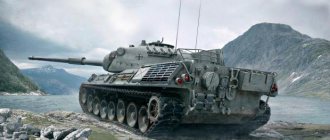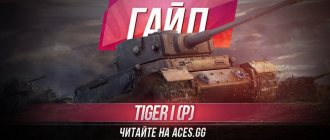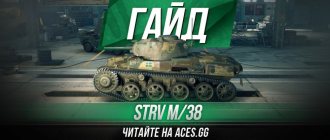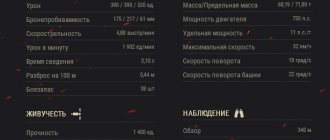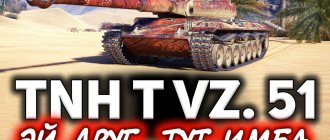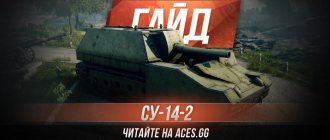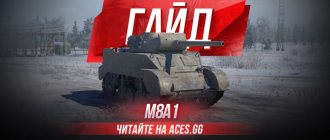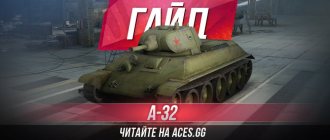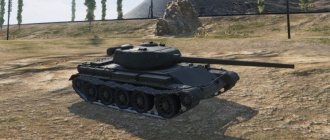Tank T-10M “object 272”
The next modification of the T-10 tank - “object 272” - was developed in accordance with the decision of the plenum of the Scientific and Technical Committee of the GBTU, held on December 14, 1954. Initially, A. Shneidman was appointed its leading engineer, then the management of the work was transferred to P. Mikhailov.
Tank T-10M “object 272”
The modernization affected primarily the tank’s armament. The 122-mm D-25T gun, which was installed on IS-2 tanks, was finally retired. Instead, the tank received a significantly more powerful M-62T2S (2A17) gun, albeit of the same caliber. The M-62 gun itself was designed in the design bureau of plant No. 172 in Perm (then still the city of Molotov) under the leadership of chief designer M. Tsirulnikov. Prototypes were tested in 1953 and showed significantly better ballistic characteristics. Thus, the initial speed of an armor-piercing projectile was 950 m/s with an armor penetration of 225 mm at a distance of 1000 m. For the D-25, these characteristics were equal to 795 m/s and 145 mm, respectively. In addition, the M-62 had a number of operational advantages. A characteristic external feature of the M-62 was a slot-type muzzle brake, which absorbed up to 70% of the recoil force when fired.
T-10 in ambush. At the maneuvers of the Group of Soviet Forces in Germany. The white stripe on the right side of the hull indicates that the tank belongs to a certain side of the participants. Early 1960s
A prototype of the M-62T2S gun, stabilized in two planes, passed factory tests in the summer of 1955. Its first three samples with 2E12 Liven stabilizers were sent to LKZ on November 1, 1955 and installed on “object 272” with a T2S-29- gunner’s sight 14.
Turret of the T-10M tank, front left view
The auxiliary machine gun armament on the tank was also updated, equipping it with more powerful 14.5 mm KPVT. One of the machine guns, coaxial with the gun, could also be used as a sighting machine at ranges up to 2000 m. Its T2S-29 sight had a special sighting scale for this purpose. Another machine gun - an anti-aircraft machine gun with a VK-4 collimator sight - was placed on the turret, on the chase of the loader's hatch; its maximum sighting range was 1000 m. If necessary, this machine gun could also fire at ground targets using the PU-1 optical sight.
T-10M tank turret: 1 — hole for the gun frame mounting pin; 2 — window for the DShK machine gun; 3 - hook; 4 — rain shield; 5 — hole for the rod for attaching the gun frame; 6 — armor plate of the tower roof; 7 — hole for installing a monitoring device for charging consumer goods; 8 — loader hatch cover; 9 — handle for turning the upper strap of the loader hatch; 10 — armored guard of the TPN-1 sight; 11 — tank commander’s hatch cover; 12 — cover of the turret aft box for spare parts; 13 — feed box for spare parts; 14 — antenna input glass; 15 — hole for the TPB-51 surveillance device; 16 — handrail; 17 — armor cap of the T2S-29 sight; 18 — recess for opening the folding sheet above the radiators
Turret hatch of the loading tank T-10M. The gear of the hatch rotation mechanism and the mounting holes for the anti-aircraft machine gun turret are visible.
All crew members, except for the loader, had night vision devices: the commander - TKN-1T, the driver - TVN-2T, the gunner - TPN-1-29-14 "Luna", which allowed for targeted shooting at night with a maximum range of 1150 m. The turret's armor was somewhat strengthened, the placement of observation devices and sights, and the shape of their armor were changed. The design of the driver's hatch cover and the roof of the power compartment were changed.
Turret of the T-10M tank, front right view
They installed a more powerful V-12-6 diesel engine, which had 750 hp, on the tank. With. at 2100 rpm and differed in the design of the crankcase, crankshaft, cylinder pistons, etc. They introduced a foot brake pedal and new final drives, in which the planetary gear was located inside the drive wheel. To improve the smoothness of the ride, the number of hydraulic shock absorbers was increased to six, and the dynamic stroke of the support roller increased from 144 to 172 mm. The supply of transportable fuel was increased to 400 liters due to two new tanks, which were placed on the rear of the hull. The tank received a PAZ and TDA system for setting up a smoke screen.
Turret commander hatch of the T-10M tank
Combat placement of the TPN-1 sight on the tank: 1 - sight; 2 — ball flange of the sight; 3 - ring; 4 - coupling bolt; 5 — conical liner; 6 — sight bracket; 7 — lever for the gun lifting mechanism; 8 — parallelogram thrust; 9 — lever for the drive mechanism of the head mirror of the sight; 10 — armored fence; 11 — spotlight L-2
General view of the T-10M tank on the left and top
General view of the T-10M tank on the right, front and rear
Stops and balancers of road wheels, idler wheel of the T-10M tank
Chassis of the T-10M tank
Chassis of the T-10M tank: 1 – guide wheel crank; 2 – track tension mechanism; 3 – stop; 4 – balancer; 5 – support roller bracket; 6 – support roller; 7 – final drive; 8 – caterpillar; 9 – support roller; 10 – guide wheel
Drive wheel of the T-10M tank
The radio station R-133 and TPU R-120 were used as means of communication. As a result of all these changes, the mass of the tank increased to 51.5 tons. State tests of “object 272” were completed in December 1956. Based on their results, the tank was recommended for production. By this time, LKZ was involved in the release of the new modification. Before this, the T-10, T-10A and T-10B tanks were produced only at ChKZ. Despite all the efforts made by the designers and industry management, it was not possible to achieve complete unification of the machines produced at these two factories. Therefore, on September 26, 1957, by order of the Minister of Defense, two tanks were put into service under the designation T-10M: “Object 272” - Leningrad and “Object 734”, produced in Chelyabinsk.
Control compartment of the T-10M tank: 1 - handle of the locking device of the driver's hatch cover; 2 — TPU device; 3 — gearbox oil pressure gauge; 4 - high voltage wire to the TVN-2T device; 5 — central shield of the driver; 6 — driver’s hatch cover; 7 — electrical wire to the windshield wiper; 8 — control handle for ejector flaps; 9 — central valve of the air starting system; 10 — air intake valve; 11 — closing mechanism of the driver’s hatch; 12 — PPO cylinders; 13 — shell casings; 14 — manual fuel priming pump; 15 — box for storing grenades; 16 — manual fuel supply lever; 17 — selector handle; 18 — reverse lever; 19 — spare device TPV-51; 20— right control lever; 21 — fuel pedal; 22 — driver’s seat; 23 — stopping brake pedal; 24 — box with TBN-2T device; 25 — control pedal; 26 — left control lever: 27 — battery switch; 28—external trigger socket; 29 — batteries; 30 — bag with tank documentation; 31 — tank for drinking water; 32 - electrical distribution panel
ChKZ vehicles were distinguished by design changes in transmission control drives, final drives, and fuel supply systems. Although this situation ran counter to the requirements for standardization and unification of weapons and military equipment, nevertheless, tanks with these design differences were in production until 1962, when production of the T-10M in Chelyabinsk ended; at LKZ their production continued until the end of 1965. Since 1959, the command vehicle “object 272K” based on the T-10M, designed to provide communication between the unit commander and higher command and headquarters, went into production in Leningrad. To accommodate the additional R-112 radio station and charging unit, the ammunition load for the gun was reduced to 22 rounds. The communication range of the R-112 when operating with a 10-meter antenna in a parking lot in telegraph mode was 100 km, in telephone mode - 40 km. A total of 100 T-10MKs were built from 1959 to 1964 (produced only at LKZ).
Fighting compartment: 1 — power supply unit for the TPN-1 night sight; 2—radio station: 3—azimuth indicator; 4 — tower electrical panel; 5— tower stopper; 6 — distribution box K-1; 7 — antenna lead; 8 — compensator box; 9 — control panel for light direction indicator; 10 — turret rotation mechanism; 11 — electrical unit of the T2S-29 trailer; 12 — TPN-1 night sight; 13—TPU device; 14 — T2S-29 sight; 15 — additional tank; 16 — gun lifting mechanism; 17 — M62-T2 gun; 18 — gun lowering limiter; 19— KPVT coaxial machine gun: 20—PT-200Ts frequency converter; 21—coaxial machine gun magazine; 22 — box with spare parts for the T2S-29 sight; 23— projectile carriage; 24 - seven-seat sleeve packing; 25 — coaxial machine gun magazine; 26 — box with TPB-51 device
During the production process, changes were constantly made to the design of the T-10M. Thus, from December 1962, they began to install a manual transmission that was easier to manufacture, originally developed as a backup option. It was 507 kg lighter than the previous one and had significantly smaller dimensions, which made it possible to additionally place 100 liters of fuel in the reserved volume. Since 1963, the T-10M began to be produced with an OPVT system: the tank could now overcome water obstacles up to 5 m deep along the bottom. Since 1964, an automatic PPO system with a more effective fire extinguishing agent “3.5” was introduced.
Hull of the T-10M tank. View of the stern
Hull of the T-10M tank (view of the stern): 1 - upper aft folding sheet; 2 — rear side sheets; 3 — pin for fastening the shock absorber lever earrings; 4 — mounting brackets for mud cleaners; 5 — socket for installing final drive; 6 — towing hook; 7 — torsion roller; 8 — lower stern sheet
Hull of the T-10M tank (front right view): 1 - lower inclined front plate; 2 — upper inclined frontal sheets; 3 — loops for attaching the front reflector; 4 — guide wheel crank bracket; 5 — towing hook; 6 — towing hook latch: 7 — brackets for attaching the vertical shield; 8 — headlight guard; 9 — front sloping roof sheet; 10 — driver’s hatch; 11 — protective bar; 12 — turret sheet; 13. 19 — ejector exhaust windows; 14, 18 — mesh windows above the radiators; 15 — grid window for starting air into the engine in summer; 16 — roof sheet over the engine; 17 — air intake screen window for the engine in winter; 20 — upper inclined side sheet; 22 — lower bent side sheet; 22 — support roller balancer bracket; 23 — balancer stop; 24 - flange; 25 — headlight and signal guard; 26 — trunnion of the track tension mechanism
T-10M (turret, seats, instruments and control levers, ammunition racks are not shown): 1, 26 — front mud flaps; 2 — turret roof sheet; 3, 24— front spare parts boxes; 4 - window for letting air into the engine in summer; 5, 22 — middle spare parts boxes; 6—ejector outlet windows; 7 and 20—window grids above the radiators; 8 and 19—rear spare parts boxes; 9 — fuel tank filler plug; 10 and 16 — hole plugs for access to the adjusting nuts of the brake bands; 11 and 15 — rear mud flaps; 12 — upper aft folding sheet; 13 — window for air intake into the engine in winter; 14 — hatch cover for servicing the lubrication system; 17— plug above the oil dipstick; 18 — removable roof sheet over the engine; 21 — cooling system filler plug; 23 — hull bottom; 25 — driver’s hatch cover; 27 — brackets for fastening the vertical shield; 28 — front reflector
The next modernization of the T-10M tank was related to its armament. Progress in tank building did not stand still, and if in the 1950s 122-mm Soviet tank guns easily penetrated the armor of any NATO tanks with their armor-piercing caliber shells, then in the 1960s the situation changed. The 105-mm guns of the American M60 tank and the 120-mm English Chieftain, produced at that time, hit the T-10M. The caliber armor-piercing shells of our M-62 gun did not penetrate the frontal armor of these tanks.
Roof of the MTO tank T-10M
In the current situation, on the instructions of the Ministry of Defense and the State Committee for Defense Equipment, the development of 122-mm sub-caliber and non-rotating cumulative projectiles for the M-62T2S gun began. A shot with a cumulative projectile that pierced a vertically located armor plate 450 mm thick was put into service on November 30, 1964. Since 1967, the T-10M ammunition included an armor-piercing sub-caliber projectile with an initial speed of 1600 m/s, piercing 320 mm armor at a range of 2000 m. In 1963, a small number of T-10M tanks were additionally armed with Malyutka anti-tank guided missiles. They also tried to equip the T-55 medium tanks with the same ATGMs. The launcher for three Malyutka missiles was located outside on the rear of the turret in a special casing; it was equipped with an electric lifting mechanism. The missiles were guided by matching the launcher's pointing angles with the aiming line of the gunner's standard sight. The tank's ammunition load included six missiles.
Anti-tank missile system “Malyutka”. Portable infantry version: missiles on launchers in firing position, control panel with monocular sight and guidance equipment
Launcher for three Malyutka missiles on the rear of the T-10M tank turret
It can be argued that the T-10 tank turned out to be a completely successful vehicle, which organically combined powerful armor protection, highly effective weapons and good maneuverability. The simplicity of the design, convenient control, and high maneuverability distinguished it favorably from other Soviet and foreign heavy tanks. In the early 1950s, when the development of the T-10 began, the only heavy tanks of its own design, besides the USSR, were in service with the United States - M103 (1956) and England - Conqueror (1954). However, both of these tanks were inferior to the T-10: they were heavier and taller, had low speed; Due to the fact that they were equipped with carburetor engines, their fuel range was significantly lower, not to mention a significantly greater fire hazard. The Conqueror, with a 120-mm rifled gun, which turned out to be extremely bulky, could only boast a single-plane stabilizer in the vertical plane, while the M103 did not have one at all. The T-10A was already equipped with a single-plane stabilizer in 1956, and the T-10B was equipped with a two-plane stabilizer. Foreign tanks did not have a PAZ system, and they did not have the ability to overcome water obstacles along the bottom. True, the Soviet tank was somewhat inferior to them in armor protection of the front part of the hull, but was significantly superior in mobility and cross-country ability. In general, the T-10 tank met the basic tactical and technical requirements for heavy vehicles of that period.
Bottom of the hull of the T-10M tank:
1 - bottom of the hull; 2 — hatch for the exit of gases from the heater boiler; 3 - hole for draining fuel from the drain tank and draining coolant; 4 — hatch for draining oil from the oil tank; 5 — hatches under the power transmission; 6 — oil drain plugs from the housing pockets under the final drives;
7 — fuel drain hatch; 8 — hatch under the engine; 9 — emergency exit hatch; 10 — oil drain hatch Overturned T-10M tank. The hatches on the bottom of the hull are clearly visible
For a long time, Western experts believed that more than 8 thousand T-10 tanks of all modifications were built in the USSR, accordingly calling it the most massive heavy tank in the world tank building. In reality, everything turned out to be much more modest. According to the latest published data, from 1953 to 1965, only 1,439 T-10 tanks of all modifications were produced. These vehicles were mainly sent to armament of heavy tank divisions, which began to be formed in 1954.
Placement of stabilization system devices in the turret: 1 – T2S-29 sight; 2 – executive cylinder; 3 – converter; 4 – additional tank; 5 – second distribution box; 6 – electric machine amplifier; 7 – hydraulic booster; 8 – block of gyrotachometers; 9 – limiter; 10, 13 – distribution boxes; 11 – executive motor; 12 – compensator box; 14 – electrical unit
Placement of ammunition in the T-10M tank: 1 - single stowage for seven shells on the top shelf in the turret niche; 2 - double stacking of cartridges on the lower shelf in the turret niche; 3 - double and single stowage of cartridges in the housing niche; 4 - single stacking of cartridges on the wall of the tower niche; 5 - single stacking of cartridges on the right side of the tower; 6 - five-place stowage of shells with a single stowage for the cartridge case on a rotating floor; 7 - seven-place stowage of cartridges with three single stowage of shells in the control compartment; 8—single stowage of the projectile in the hull niche behind the seven-place cartridge stowage; 9 - triple stowage of shells in three carriages on the turret chase; 10 - double stowage of shells and double stowage of cartridges above the batteries; 11 — double stowage of shells under the tank commander’s seat; 12 - single stacking of shells in the left corner of the fighting compartment near the engine bulkhead; 13 — boxes (3 pcs.) with tapes at the corners of the fighting compartment for a coaxial machine gun; 14 — boxes with tapes on the rotating floor (3 pcs.) and on the side of the turret (1 pc.) for an anti-aircraft machine gun; 15 - laying zinc boxes with cartridges on the rotating floor (5 pcs.) and under the rotating floor (2 pcs.)
During this period, as part of the review of methods of conducting combat operations in the context of the use of nuclear weapons, measures were taken to change the standard organization of troops. In order to increase the survivability of army units, the number of tanks, armored personnel carriers, and anti-aircraft weapons in their composition increased sharply. Thus, according to the new states adopted in 1954, a tank regiment of a tank division consisted of 105 vehicles (previously there were 65). In addition, a mechanized regiment was included in the division. From the same year, TTDs began to be formed, intended to break through the enemy’s fortified defenses, which included three TTDs armed with 195 vehicles. It was here that the T-10 tanks entering the troops began to be transferred.
Installation of a DShK machine gun coaxial with a gun in the gun mantlet of a T-10M tank
Slotted muzzle brake of the 122-mm M-68T2S gun of the T10-M tank
Loading the D-15TA gun of the T-10 tank. The projectile is on the rammer chain, sending it into the gun chamber
Armor mantlet of the T-10M tank gun
The first to be deployed were two heavy tank divisions as part of the Group of Soviet Forces in Germany. These were the 13th Guards Bobruisk-Berlin Red Banner of the Order of Suvorov and the 25th Guards Red Banner. Later they were joined by the 5th Korsun Red Banner TTD and the 34th Dnieper Order of Suvorov TTD from the Belarusian Military District, as well as the 14th Guards Bakhmach Twice Red Banner Order of Suvorov TTD from the Kyiv Military District. To form them, both the personnel and equipment of the separate heavy self-propelled tank regiments disbanded in 1956 were used.
T-10M tanks in Czechoslovakia as part of the troops of the Warsaw Pact countries. 1968.
T-10M tanks in Czechoslovakia as part of the troops of the Warsaw Pact countries. 1968.
As part of the Ground Forces, the TTD existed until the early 1970s, when the main tanks T-64, T-72 and, finally, T-80 began to arrive in army formations. In terms of their combat characteristics, they were significantly superior to the heavy T-10s, which were gradually transferred to long-term storage, transferred to fortified areas on the Soviet-Chinese border, or sent for disassembly and dismantling. Officially, like many other Soviet armored vehicles, the T-10 heavy tanks were withdrawn from service only in 1993, already in the Russian Army. The T-10 tank cannot boast of any bright combat career. These vehicles were never exported, so they did not have the opportunity to show themselves, for example, in battles in the Middle East, where most Soviet tank equipment (T-54, T-55, T-62, T-72, PT) underwent combat testing -76). The only major military operation in which the T-10 took part was Operation Danube - the entry of troops of the Warsaw Pact countries into the territory of Czechoslovakia “in order to combat counter-revolution in Eastern Europe.” They were part of the 13th TTD of the 1st Guards TA and in the 25th Red Banner Division of the 20th Guards Red Banner Army.
Source: Armor Collection 4'09
Video reviews
T-10 – HOW TO PLAY AND WHAT TO DO WITHOUT WoT GOLD? Hyde
T-10 – It doesn’t get any better!!!
“HARD BENDER...8000 DAMAGE on T-10” / WHAT IS THE T-10 CAPABLE OF? #The best for you
